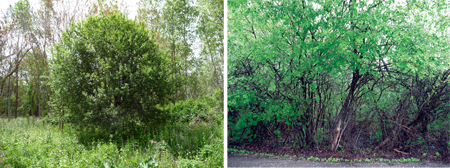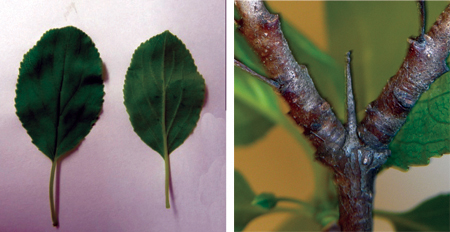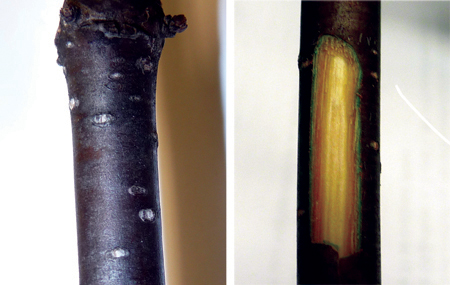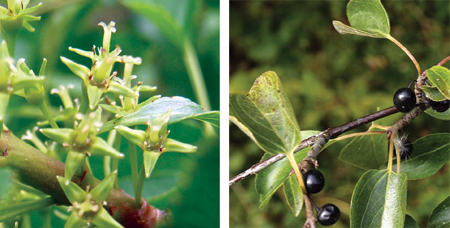Watch your landscape for this invasive shrub
Editor’s note: This article is from the archives of the MSU Crop Advisory Team Alerts. Check the label of any pesticide referenced to ensure your use is included.
Common buckthorn (Rhamnus cathartica) is an invasive shrub or tree originating in Eurasia that was introduced to the United States as an ornamental plant. It has many negative impacts on the environment including reducing light availability for native plants in forest understories and facilitating several other exotic species. Buckthorn is the link in a chain of invaders that has a negative impact on the ecosystem. Not only does the shrub choke out native plants, but it is also is the overwintering host for the soybean aphid, an invasive pest that damages soybeans.
Common buckthorn is often found in hedgerows and along forest edges. Here’s how to identify it for removal from your landscape.
Appearance: Shrub or small tree reaching up to 25 ft. in height. Crown irregularly shaped. Multiple stems at base.
Leaves: Oval or rounded with pointed tip. Margins finely-toothed. 3-5 pair upward-curved veins. Glossy and smooth. Hairless on top and bottom.
Branches: Buds and leaves are opposite. End in short, sharp spines.
Bark: Rough; grey to brown with light-colored lenticels.
Wood: Inner bark yellow and heartwood orange or pink.
Flowers: Dense clusters of 4-petaled, yellow-green flowers in spring.
Fruit: Large, black berries. Ripen in fall.
If you’d like to help encourage people to destroy buckthorn plants in your area, bookmarks with the identification information in this article are available from MSU Extension’s bulletin office. Call 517-353-6740 (Hours: M-F 8:00am - 5:00pm.). The bookmarks are packaged in groups of 100.
This information is being provided through USDA AFRI. Project team: Mary Gardiner, Ohio State University; Matt O’Neal, Iowa State University; and Doug Landis, Michigan State University.



 Print
Print Email
Email






